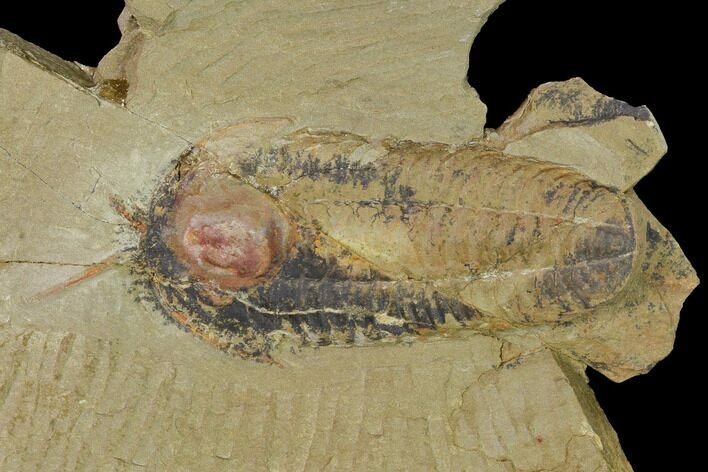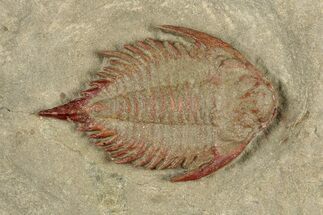This Specimen has been sold.
2.1" Trilobite (Bavarilla) With Preserved Antennae - Morocco
This is a 2.1" long specimen of the phacopid trilobite Bavarilla zemmourensis, one of the few types trilobites in the world whose appendages have been found preserved. This specimen includes a pair of preserved antennae faintly visible. It is from the Lower Ordovician Fezouata Formation of Morocco. The red coloration is due to the oxidization of iron pyrite which originally preserved the trilobite. There are a couple of repaired cracks running through the rock and the fossil.
It comes with an acrylic display stand.
It comes with an acrylic display stand.
About Trilobites
Trilobites are an extinct class of marine arthropods that thrived for nearly 270 million years, from the early Cambrian to the end of the Permian period (around 521 to 252 million years ago). They are one of the most successful and diverse groups in the history of life, with over 25,000 described species spanning a wide range of sizes, shapes, and ecological niches. Known for their distinctive, segmented exoskeletons, trilobites provide invaluable insights into the evolutionary history of arthropods and the dynamics of ancient marine ecosystems.
Trilobites are an extinct class of marine arthropods that thrived for nearly 270 million years, from the early Cambrian to the end of the Permian period (around 521 to 252 million years ago). They are one of the most successful and diverse groups in the history of life, with over 25,000 described species spanning a wide range of sizes, shapes, and ecological niches. Known for their distinctive, segmented exoskeletons, trilobites provide invaluable insights into the evolutionary history of arthropods and the dynamics of ancient marine ecosystems.
SPECIES
Bavarilla zemmourensis
AGE
LOCATION
Zagora Area, Morocco
FORMATION
Fezouata Formation
SIZE
2.1" long (not including antennae)
CATEGORY
SUB CATEGORY
ITEM
#170640
We guarantee the authenticity of all of our specimens.
 Reviews
Reviews











